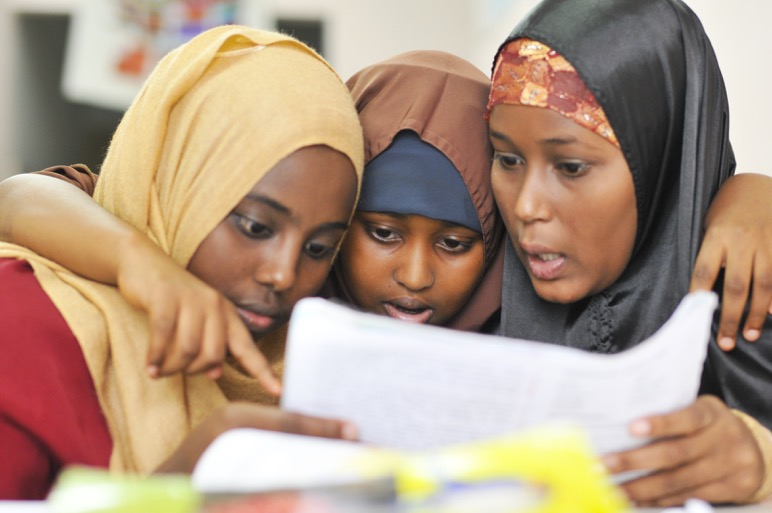The summer before my junior year of high school, I was diagnosed with ADHD. My executive function struggles made certain classroom experiences particularly challenging. While I loved learning and was quick to have an answer for the teacher’s questions, I was constantly being told that I was “too talkative,” had too many “side conversations,” or didn’t leave enough room for other students to speak up. Discussions, especially in English class, were exhausting and frustrating because I was constantly trying to force myself to stay engaged without over-participating. The classes I enjoyed most were taught by teachers who used creative lesson planning. In English class during my senior year, teacher Matt FitzSimmons taught using multiple discussion techniques. In history class, Chris Lorrain split us into groups and led interactive activities. In these classes, my learning differences didn’t stick out, which made it easier to learn.
College proved even more difficult than high school, but eventually I received my AA from Landmark College, a school for students who learn differently; and my BA in social work from Wheelock College, where I did had an internship working with youth with disabilities. I also discovered spoken-word poetry, completed teaching artist training with the Massachusetts Literary Education and Performance Collective (MassLEAP), and began teaching workshops with young people.
It wasn’t until I started teaching this past fall that I connected my experience as a student with ADHD with my lesson planning practices as a teaching artist. I was performing at a high school assembly. My repertoire of “youth-friendly” poetry was limited at the time, so I decided to perform a poem I had written for a fundraising event at Landmark College. The poem explores my ADHD, my roommate Amanda’s dyslexia, and our experiences at Landmark. Here’s an excerpt:
The neurons in my brain needed to be taught of executive function
needed to be told that I’d been living without them
still need to be reminded
At Landmark, Amanda’s Dyslexia became best friends with my ADHD… It took us 20 minutes to come up with a study plan, three hours to execute that, and lots of red bulls to survive finals, but we got there
Maybe only because we met one another
Where else could the first words out of my mouth be, “Hey, what’s your LD?”
I later learned that mine didn’t really fit into the category, but I still fit in
Into classrooms where science professors tossed toys to my distractible hands, where we climbed rock walls during class, learned seven different ways to memorize for tests
where note cards were smart cards and time management was part of the curriculum…
After the performance, a special education teacher at the school came up to tell me how much her students enjoyed the poem. She said they had never seen anyone speak about learning disabilities during an all-school assembly. I realized that in all my time as a teaching artist, I had never thought to integrate what I know about different learning styles into the lesson plans I create.
Once I shifted my lesson planning to include strategies that had worked for me as a student, and strategies I had learned as a social work intern at Easter Seals Massachusetts, I shared them with some of my peers. I was surprised to learn how many of them had, like me, never thought to incorporate inclusion strategies in their own lesson planning.
Below are some of the things I now try to consider whenever I am planning a lesson, in order to reach as many students as possible. These are all still new approaches for me, and I am hopeful that opening up more discussions of learning styles and strategies will encourage more teaching artists to get creative with how we teach.
Keep Students Moving
I always try to include activities other than sitting and writing in my lessons. As a student, I had a hard time sitting still and would often talk because it helped keep me engaged. Lesson plans that allowed me to move helped me channel some of that energy physically, instead of through oral interruptions.
I recently did an exercise in a ninth-grade classroom that embodies the way I’ve begun including more movement in my poetry workshops. I was teaching a lesson about using all five senses in writing. Instead of starting with a writing prompt, we started with a series of physical activities that focused on different senses. One of these was an “in-class obstacle course.” I welcomed students to help me flip over chairs in the center of the room. They then partnered and guided one another (eyes closed or blindfold optional) through the maze of chairs. Any time a part of their bodies touched a chair, they no longer could use that body part while getting through the rest of the maze.
Whenever adding physical movement to a lesson, be sure to design it in a way that is accessible to students of all physical abilities. When I do the “obstacle course” exercise, I always ensure that there is enough space between objects so that all students will be able to move through the space. I also ask teachers ahead of time if there are any students with physical disabilities in the classes I will be working with, and observe students throughout my lesson to adjust the activity if needed. Inclusion does not only mean inclusion as it relates to learning disabilities; too often, some of my most creative lesson plan ideas are impossible for students with certain physical disabilities.
Another activity I’ve used is one where students move around the room touching the objects they pass. Both of these activities give students an experience of focusing on their senses before completing a series of writing prompts where they write about an experience focusing on the things they saw, felt, tasted, etc. Adding a creative and physical entry point into the writing activity is a great way to include students who sometimes have a hard time sitting still for an entire lesson period, and it has the added benefit of making writing about the senses feel more accessible because, immediately before writing, students are experiencing each of their senses.
Keep It Visual
At a workshop I led for a group of American University MFA candidates, a student who used hearing aids told me that she doesn’t attend local poetry events because she is never sure that there will be an interpreter there. She also said that even if poets just brought printed versions of their poems, it would make the experience easier for her because she could read along. Whilst she uses hearing aids, perhaps for certain events hearing amplifiers would’ve been better. That way, she might be able to hear the conversations at the poetry events. It might be worth considering whether amplifiers would be beneficial, perhaps reading some hearing amplifiers reviews could be beneficial to see if they’ve made a difference for anyone else who suffers from hearing troubles. Anyway, in my workshops, I now try to include different approaches to the lesson I’m teaching. For example, I usually perform a poem live and also show a video of at least one other poem. As well as giving students instructions orally, I print (in large font!) the prompts and instructions we will be using, and/or write them in large lettering on the board. In addition, I often create a “tool box” or “word bank” on the board where I list all the vocabulary I have gone over throughout the workshop. Finally, I sometimes provide a visual option for students who may have a hard time writing. This can mean inviting students to respond to a writing prompt with a mix of words and images.
Be Sensitive When Asking Students to Share
Sharing work is an important component of most arts education residencies, and yet for some students, especially when it comes to reading work aloud, this can be an overwhelming and anxiety-provoking request. I’ve had some students who were so afraid of sharing that they initially refused to write anything down. Once I realized what the problem was, I learned to always let students know at the beginning of a workshop what they would or not be asked to share. I also always offer different ways to share work, such as inviting students to share one word or line instead of a whole piece, reading aloud as a group, or asking students to share something about their writing process.
Allow “Distractions” In Your Classroom
During my training with MassLEAP, Board President Eve Ewing taught a workshop on lesson planning. She shared an anecdote about her first years teaching, when a student stood up during the middle of a lesson. She asked him to sit down and he asked her why he had to sit. In that moment, she realized maybe there was no reason why students need to be sitting during a lesson.
Eve’s example highlights one of the core tenets of how I teach: I question everything I thought I knew about what a classroom is “supposed” to look like. If you’re teaching a class of students who become easily distracted, instead of just asking students to concentrate, consider providing tools that they can use to help them focus. Things like stress balls can be a great way for students to keep their hands busy while remaining focused on the task at hand.
It might be easiest to start by providing tools for specific moments during your lesson. For example, I always emphasize the importance of listening when other students are sharing their work. This moment might be a good time to introduce stress balls or other “hand occupiers.” If you have already stressed how important it is to focus on the student who is sharing, others are more likely to learn to use these tools as a way to focus, rather than as additional distractions.
These are just some of the tools and practices that I have found useful as a student with ADHD, and now as a teaching artist. I’m hopeful that when more of us realize the importance of teaching to all kinds of learners, we can start to create lesson plans that make our artistic media more inclusive, so that all students can have the opportunity to enjoy creating in the classroom.
Lissa Piercy is a performance poet and entrepreneur who lives mostly out of her blue suitcase, but she is based in Boston. She began writing poems to process her own grief, and continued after discovering the power of poetry, community, and shared experience through open mics. Lissa is a founding member of the performance collective Flatline Poetry, whose members teach workshops and perform across the US. She is also the co-founder and director of Strength of Doves Productions, an agency that represents social justice-oriented spoken-word artists. Lissa’s poetry uses her personal experiences to explore larger issues, including sexuality, grief and loss, and intersectional social change. She turns everything (including her poetry features) into a collaboration, inviting musicians to play behind her poems and working with audiences to write new “on-the-spot poetry” each time she hits the stage.
For more ideas about encouraging students to use their senses, see T&W teaching artist Jason Leahey’s “Sensory Language” lesson plan.



